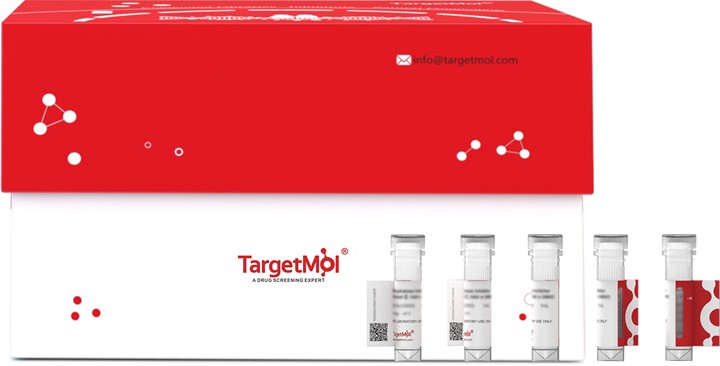 Your shopping cart is currently empty
Your shopping cart is currently empty
UBE2D4 Protein, Human, Recombinant (His)
UBE2D4 is a member of the ubiquitin-conjugating E2 family whose members perform the second step in the ubiquitination reaction. Initially identified as the main process for protein degradation, ubiquitination is believed nowadays to be crucial for a wider range of cellular processes. The outcome of the ubiquitin-conjugation reaction, and thereby the fate of the substrate, is heavily dependent on the number of ubiquitin molecules attached and how these ubiquitin molecules are inter-connected. To deal with this complexity and to allow adequate ubiquitination in time and space, a highly sophisticated conjugation machinery has been developed. In a sequential manner, ubiquitin becomes activated by a ubiquitin-activating enzyme (E1), which then transfers the ubiquitin to a group of ubiquitin-conjugating enzymes (E2s). Next, ubiquitin-loaded E2s are interacting with ubiquitin-protein ligases (E3s) and ubiquitin is conjugated to substrates on recruitment by the E3. These three key enzymes are operating in a hierarchical system, wherein two E1s and 35 E2s have been found and hundreds of E3s have been identified in humans. It has been identified the UBE2D family (UBE2D1-4) as E2 partners for IDOL that support both autoubiquitination and IDOL-dependent ubiquitination of the LDLR in a cell-free system.

UBE2D4 Protein, Human, Recombinant (His)
| Pack Size | Price | USA Warehouse | Global Warehouse | Quantity |
|---|---|---|---|---|
| 5 μg | $58 | 7-10 days | 7-10 days | |
| 10 μg | $93 | 7-10 days | 7-10 days | |
| 20 μg | $152 | 7-10 days | 7-10 days | |
| 50 μg | $298 | 7-10 days | 7-10 days | |
| 100 μg | $577 | 7-10 days | 7-10 days |
Product Information
| Biological Activity | Activity testing is in progress. It is theoretically active, but we cannot guarantee it. If you require protein activity, we recommend choosing the eukaryotic expression version first. |
| Description | UBE2D4 is a member of the ubiquitin-conjugating E2 family whose members perform the second step in the ubiquitination reaction. Initially identified as the main process for protein degradation, ubiquitination is believed nowadays to be crucial for a wider range of cellular processes. The outcome of the ubiquitin-conjugation reaction, and thereby the fate of the substrate, is heavily dependent on the number of ubiquitin molecules attached and how these ubiquitin molecules are inter-connected. To deal with this complexity and to allow adequate ubiquitination in time and space, a highly sophisticated conjugation machinery has been developed. In a sequential manner, ubiquitin becomes activated by a ubiquitin-activating enzyme (E1), which then transfers the ubiquitin to a group of ubiquitin-conjugating enzymes (E2s). Next, ubiquitin-loaded E2s are interacting with ubiquitin-protein ligases (E3s) and ubiquitin is conjugated to substrates on recruitment by the E3. These three key enzymes are operating in a hierarchical system, wherein two E1s and 35 E2s have been found and hundreds of E3s have been identified in humans. It has been identified the UBE2D family (UBE2D1-4) as E2 partners for IDOL that support both autoubiquitination and IDOL-dependent ubiquitination of the LDLR in a cell-free system. |
| Species | Human |
| Expression System | E. coli |
| Tag | N-His |
| Accession Number | Q9Y2X8 |
| Synonyms | ubiquitin-conjugating enzyme E2D 4 (putative),HBUCE1 |
| Construction | A DNA sequence encoding the human UBE2D4 (Q9Y2X8) (Met 1-Met 147) was expressed, with a polyhistide tag at the N-terminus. Predicted N terminal: Met |
| Protein Purity | > 95 % as determined by SDS-PAGE |
| Molecular Weight | 18.5 kDa (predicted); 18.5 kDa (reducing conditions) |
| Endotoxin | Please contact us for more information. |
| Formulation | Lyophilized from a solution filtered through a 0.22 μm filter, containing 20 mM Tris, 0.1M NaCl, 10% glycerol, 2 mM DTT, pH 8.0.Typically, a mixture containing 5% to 8% trehalose, mannitol, and 0.01% Tween 80 is incorporated as a protective agent before lyophilization. |
| Reconstitution | A Certificate of Analysis (CoA) containing reconstitution instructions is included with the products. Please refer to the CoA for detailed information. |
| Stability & Storage | It is recommended to store recombinant proteins at -20°C to -80°C for future use. Lyophilized powders can be stably stored for over 12 months, while liquid products can be stored for 6-12 months at -80°C. For reconstituted protein solutions, the solution can be stored at -20°C to -80°C for at least 3 months. Please avoid multiple freeze-thaw cycles and store products in aliquots. |
| Shipping | In general, Lyophilized powders are shipping with blue ice. |
| Research Background | UBE2D4 is a member of the ubiquitin-conjugating E2 family whose members perform the second step in the ubiquitination reaction. Initially identified as the main process for protein degradation, ubiquitination is believed nowadays to be crucial for a wider range of cellular processes. The outcome of the ubiquitin-conjugation reaction, and thereby the fate of the substrate, is heavily dependent on the number of ubiquitin molecules attached and how these ubiquitin molecules are inter-connected. To deal with this complexity and to allow adequate ubiquitination in time and space, a highly sophisticated conjugation machinery has been developed. In a sequential manner, ubiquitin becomes activated by a ubiquitin-activating enzyme (E1), which then transfers the ubiquitin to a group of ubiquitin-conjugating enzymes (E2s). Next, ubiquitin-loaded E2s are interacting with ubiquitin-protein ligases (E3s) and ubiquitin is conjugated to substrates on recruitment by the E3. These three key enzymes are operating in a hierarchical system, wherein two E1s and 35 E2s have been found and hundreds of E3s have been identified in humans. It has been identified the UBE2D family (UBE2D1-4) as E2 partners for IDOL that support both autoubiquitination and IDOL-dependent ubiquitination of the LDLR in a cell-free system. |
Dose Conversion
Calculator
Tech Support
| Size | Quantity | Unit Price | Amount | Operation |
|---|

Copyright © 2015-2025 TargetMol Chemicals Inc. All Rights Reserved.



